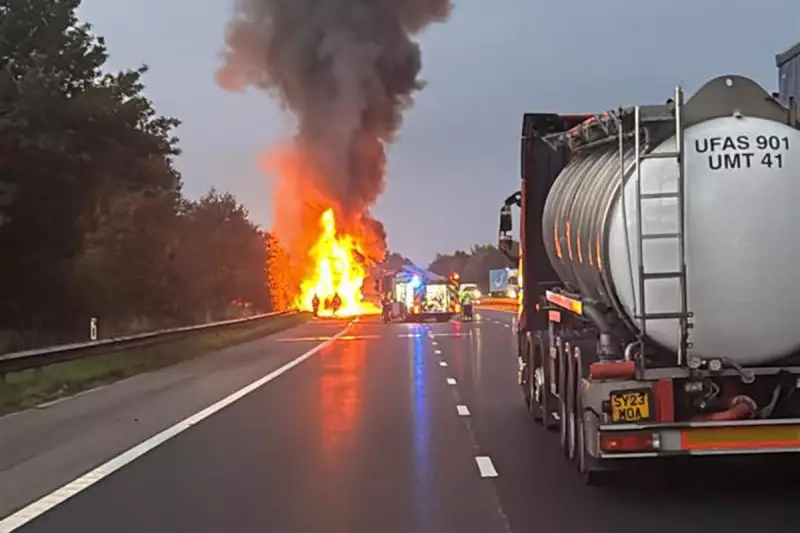
A major incident unfolded on the M5 motorway during Tuesday morning's rush hour when an electric car erupted into flames, forcing the complete closure of the critical transport artery and creating chaos for thousands of commuters.
Motorway Gridlock as Battery Fire Rages
The dramatic incident occurred between junctions 16 and 17 near Almondsbury Interchange, one of the busiest sections of the motorway network. Emergency services rushed to the scene after reports of a severe electric vehicle fire that proved particularly challenging to extinguish.
National Highways confirmed the unprecedented closure, stating: "The M5 is closed in both directions between J16 and J17 due to a car fire. Emergency services are in attendance. There are currently delays of 90 minutes on the approach to the closure."
Specialist Teams Battle Complex Blaze
Unlike conventional vehicle fires, electric car battery fires present unique challenges for fire crews. The lithium-ion batteries can experience "thermal runaway," where cells enter an uncontrollable self-heating state, making extinguishment extremely difficult and time-consuming.
Avon Fire and Rescue Service deployed multiple units to tackle the complex blaze, which required specialist equipment and techniques to fully contain. The intensity of the fire and safety concerns necessitated the complete shutdown of the motorway in both directions.
Commuters Face Morning of Misery
The closure during peak travel times created significant disruption across the region:
- 90-minute delays on approach to the closure
- Severe congestion affecting surrounding routes
- Major delays for freight and commercial traffic
- Knock-on effects throughout the South West motorway network
National Highways issued a stark warning to motorists, urging them to allow extra journey time and consider alternative routes if possible.
Electric Vehicle Safety Under Scrutiny
This incident raises important questions about electric vehicle safety and emergency response protocols. While EV fires are statistically rare compared to conventional vehicles, they present unique challenges when they do occur.
The transportation sector continues to adapt to the growing presence of electric vehicles on UK roads, with emergency services developing new techniques to handle battery-related incidents safely and effectively.
As investigations into the cause of the fire continue, this event serves as a stark reminder of the evolving nature of road safety in the age of electric transportation.





